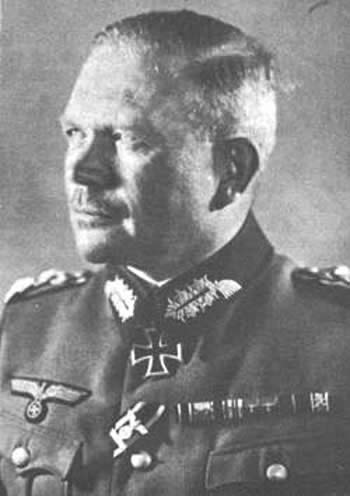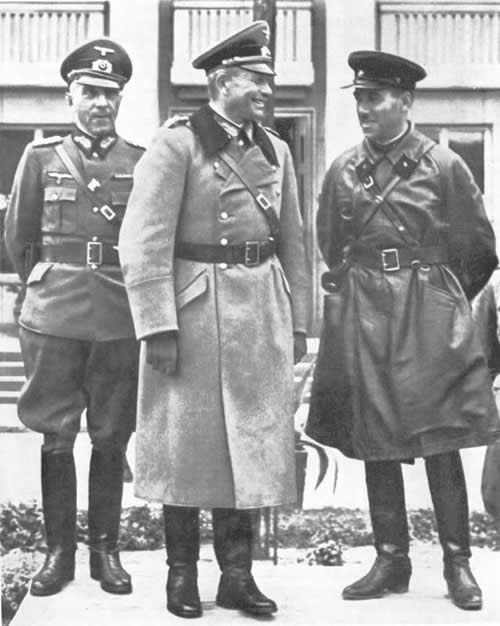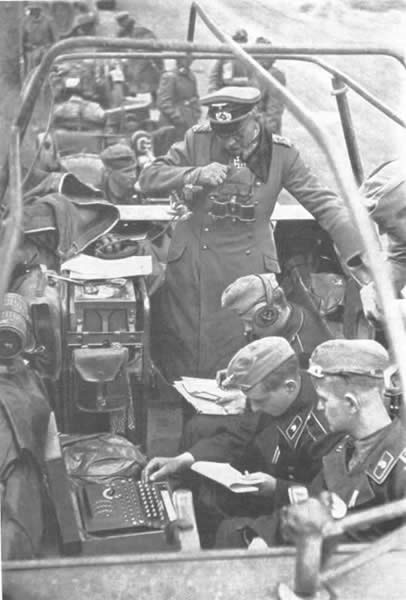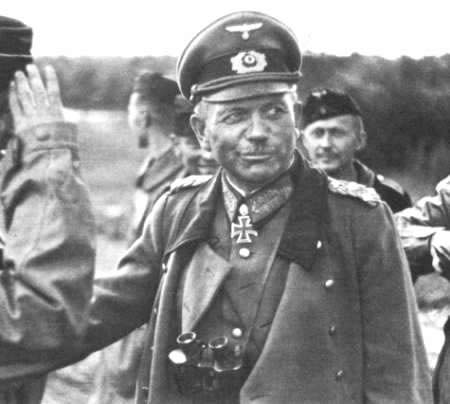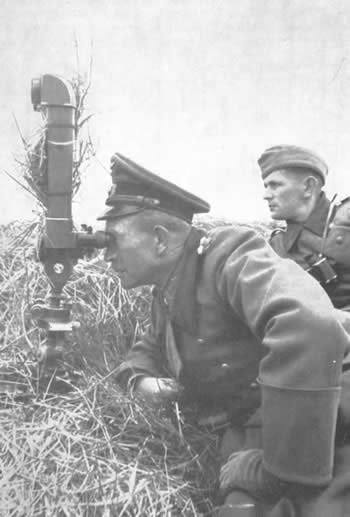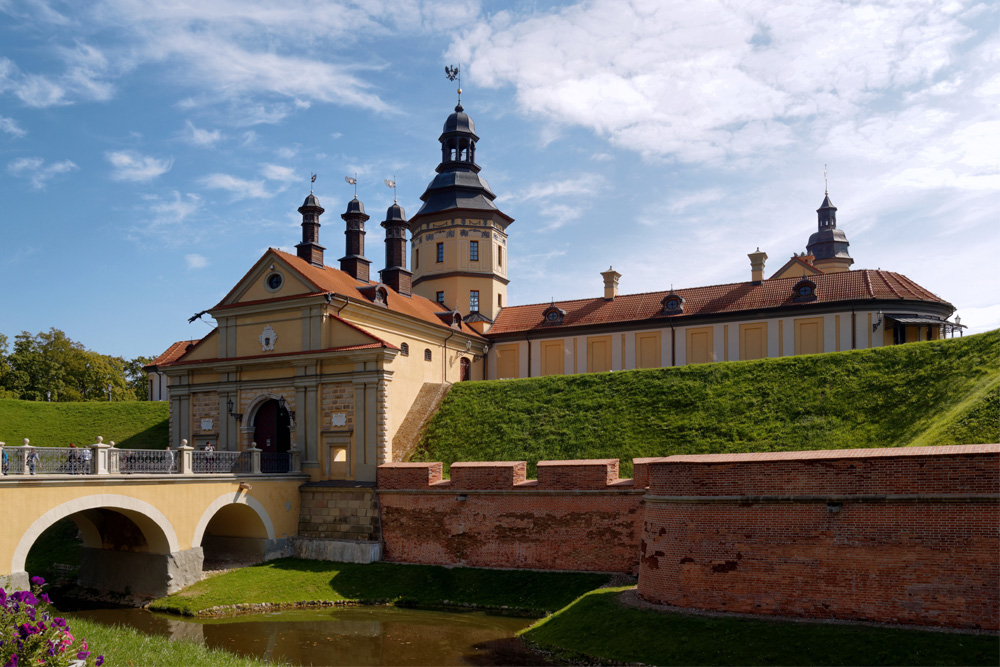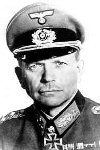Heinz Guderian was born June 17th, 1888 in west Prussian Kulm, now Chelmno, Poland, the son of a career officer. In 1901 he went to military school and subsequently to the military academy in Berlin, graduating in 1907. Guderian went on to serve in the 10.Jägerbattalion, commanded by his father. Next, Guderian commenced officer’s training in Metz which was part of the German Empire at the time. After graduating in 1908, he was promoted to 2nd Lieutenant and returned to 10.Jägerbattalion. Thereafter he served in the 3.Signalsbattalion. He married Margarethe Goerne in 1933 and they had two sons; both were to serve in World War Two.
Until the outbreak of the First World War, Guderian was a student at the military academy in Berlin. He was promoted to 1st lieutenant in 1914 and to captain the following year. During the First World War, Guderian held various posts and saw action on various battlefields at the western front. There Guderian determined that trench warfare was useless: it claimed too many victims and without a major breakthrough being achieved. Guderian witnessed the battles of the Marne and Verdun which both ended in disaster. He distinguished himself by his talent for improvisation which earned him a place in supreme command. Guderian did not command any unit during World War One but was awarded the EK (Iron Cross) 2 and 1 nonetheless.
After World War One, Guderian was taken up in the Reichswehr and he started writing articles on mechanized warfare. Moreover, he was put in command of various motorized units equipped with motorbikes and trucks. In 1927, Guderian was promoted to major and he also translated the publications of British Sir Basil Liddell Hart on mobile warfare. Guderian provided his trucks with bogus cupolas and bogus guns and held exercises with them. Guderian traveled to Sweden in order to gain experience and subsequently he went to the Soviet Union with which Germany had signed a secret agreement enabling the Germans to test the tanks in Kazan, which had been developed in secrecy. At the time, Guderian was inspector and commander of the motorized transport units, engaged mainly in supply. He also lectured at a military school in Berlin. Guderian continued writing articles on mechanized warfare and he advised German technicians in correcting technical problems with the first German tanks. After the Nazis had seized power in Germany, Hitler paid a visit to the training grounds where Guderian was conducting his tank maneuvers. Hitler was deeply impressed and ordered the establishment of three armored divisions, thereby violating the Treaty of Versailles which stipulated that Germany was not allowed to manufacture tanks.
Guderian was put in command of 2.Panzerdivision and shortly afterwards was promoted to major general. Six months later, he was promoted again, this time to lieutenant general and was given command of 16.Armeekorps. With this unit he formed the spearhead during the Anschluss with Austria and the occupation of the Sudetenland in 1938. Ten months later saw Guderian promoted to General der Panzertruppen and he was given a highly important function within the Wehrmacht: chief of the armored forces. He was given responsibility for recruitment and training of all German motorized and armored units. Now Guderian was able to pass on his personality and his knowledge to mold the armored divisions into the weapon of choice they were to become in World War Two. Meanwhile, he had written books and manuals, among them Achtung, Panzer!, describing how a modern mobile war should be waged.
In September 1939, Guderian was finally able to put his theories to the test during the invasion of Poland. Guderian commanded the 19.Panzerkorps himself and managed to achieve his goals quickly. Poland was overrun within a month and the new tactic proved very successful. Guderian was awarded the Ritterkreuz (Knight’s Cross) by Hitler for his achievements in Poland.
In the spring of 1940, Guderian was involved in working out Von Manstein’s plan for the attack on France and the Low Countries. The offensive was launched on May 10th, 1940, and Guderian’s armored divisions of 19.Panzerkorps advanced through the Ardennes surprisingly fast and managed to establish a bridgehead on the River Meuse near Sedan. After the battle of Sedan, Guderian managed to break out and struck towards the coast, encircling large numbers of Allied forces in the process. Subsequently, Guderian’s forces succeeded in pushing through to the Swiss border, encircling the French forces west of the Maginot line and enabling the Germans to win the war against France. After the campaign, Guderian was promoted to the second highest rank in the German army, colonel general.
In June 1941, Guderian was given command of 2.Panzergruppe, part of Heeresgruppe Mitte (Army Group Center), commanded by Fedor von Bock prior to the invasion of the Soviet Union. Operation Barbarossa was launched on June 22nd, 1941 and 2.Panzergruppe was involved in the large action of encirclement near Minsk, making over 300.000 Soviet soldiers prisoner of war. Guderian had a conflict with cautious Günther von Kluge though, who did not want Guderian’s tanks to advance too far east as he was afraid of Guderian’s flanks being attacked. Guderian’s tanks therefore had to wait for the infantry that still advanced mainly on foot. After the capture of Byelorussia, Guderian was awarded the Eichenlaub (Oak Leaves) to his Ritterkreuz.
Next, Heeresgruppe Mitte struck towards Smolensk where 2.Panzergruppe was involved again in a large encirclement, trapping hundreds of thousands of Soviet troops and then Guderian wanted to advance to hardly defended Moscow. Hitler had made sudden alterations to the plans of operation however and now Guderian’s tanks were to advance south in order to complete the encirclement of Kiev (a distance of over 310 miles). Guderian protested vehemently but orders were orders. Kiev was in fact surrounded and an unbelievable number of 650,000 Soviets were taken prisoner. Valuable time had been wasted though which could have been better spent to advance on Moscow. The drive on Moscow began in earnest after the fall of Kiev in October. Guderian’s tanks advanced to Vjazma and Briansk were again many Russians were taken prisoner but the Russian rainy season had started, making the already bad roads impassable. The Germans came to within a few miles of Moscow but the bitter winter cold and Soviet reinforcements threw the exhausted Germans back with heavy losses. Subsequently, Hitler issued an order to the effect the Wehrmacht was never to retreat. Guderian however conducted an inevitable strategic retreat, for which he was sacked by Hitler.
After the catastrophe at Stalingrad Hitler recalled Guderian and named him Inspector of the Armored Forces because of the imminent summer offensive. These forces had to be modernized again for Operation Zitadelle (Citadel, the codename for the last German-Italian offensive in Russia in 1943). In cooperation with Reichsminister für Rüstung und Munitionen, Albert Speer Guderian saw to it that the number of tanks produced each month increased drastically. This way, Guderian was responsible for the modernization of the obsolete PzKpfw IV instead of scrapping it because mechanically, this tank was relatively dependable. Nonetheless, Zitadelle ended in a massive failure and consequently, Germany lost the initiative on the Eastern Front forever. There would never be another large scale German offensive in the East anymore. Guderian however remained inspector of the armored forces.
After the failed murder attempt on Hitler on July 20th, 1944, Guderian was named Chief of Staff of all German land forces in the East. Although Guderian was no real Nazi, he was a member of the jury of a special court martial, the Ehrengericht established after the attempt. Together with other members, including Wilhelm Keitel and Gerd von Rundstedt this court discharged a number of high ranking officers whom Hitler had accused of complicity so later on, these officers could be tried by the Volksgerichtshof, chaired by the tyrannical judge Roland Freisler and sentenced, almost all of them to death.
Being Chief of Staff, Guderian had the thankless task to bring the advancing Red Army to a halt. In the autumn of 1944, he discovered to his great horror that Hitler was preparing a counter offensive in the west, removing troops from the east. The offensive in the Ardennes failed, enabling the Soviets to make enormous progress on the eastern front, due to the weak resistance. After the defeat in the Ardennes, Hitler transferred an entire army from the west to Hungary where he wanted to attack again in order to recapture Budapest and the oilfields (Operation Frühlingserwachen). Guderian however wanted these troops to be deployed between Berlin and the advancing Red Army. Again, a huge dispute ensued between him and Hitler and on March 28th, 1945, Guderian was relieved of his function due to the dismal military situation, after he had also urged Hitler to ask the western Allies for an armistice.
In May 1945, Guderian surrendered to American troops who transferred him to Nuremberg where he did not stand trial after all. The Soviets did want to indict Guderian for war crimes but the western Allies did not extradite him to the Soviet Union. Being a prisoner of war, Guderian was kept in custody in Neustadt and Allenstein in Germany from 1946 to 1948. After his release, Guderian published his memoires entitled "Erinnerungen eines Soldaten" in which he described the most important tank battles of the war in Europe, seen from a German point of view of course.
Heinz Guderian passed away May 14th, 1954 in Schwangau. He will always be remembered as the one who perfected the armored arm and Blitzkrieg, the principle which is still being used by modern armies.
Definitielijst
- Blitzkrieg
- The meaning of this word is “Lightning War”. Short and fast campaign. As opposed to a trench war the Blitzkrieg is very quick and agile. Air force and ground forces work closely together. First used against the Germans (September 1939 in Poland.
- First World War
- Took place from 1914 till 1918 and is also named The Great War. The conflict started because of increased nationalism, militarism and neo-colonialism in Europe. Two alliances battled one another during the 4-year war, which after a dynamic start, resulted into static trench warfare. The belligerents were the Triple Alliance (consisting of Great-Britain, France, and Russia; later enlarged by Italy and the USA, amongst others) on the one hand and the Central Powers (consisting of Germany, Austria-Hungary, Bulgaria and the Ottoman empire) on the other hand. The war was characterized by the huge number of casualties and the use of many new weapons (flamethrowers, aircraft, poison gas, tanks). The war ended in 1918 when Germany and its allies surrendered unconditionally.
- Heeresgruppe
- The largest German ground formation and was directly subordinate to the OKH. Mainly consisting of a number of “Armeen” with few directly subordinate other units. A Heeresgruppe operated in a large area and could number several 100,000 men.
- infantry
- Foot soldiers of a given army.
- invasion
- Armed incursion.
- Iron Cross
- English translation of the German decoration Eisernes Kreuz.
- Maginot line
- French defence line along the French-German border.
- Nazi
- Abbreviation of a national socialist.
- offensive
- Attack on a smaller or larger scale.
- Red Army
- Army of the Soviet Union.
- Reichswehr
- German army during the Weimar republic.
- resistance
- Resistance against the enemy. Often also with armed resources.
- Soviet Union
- Soviet Russia, alternative name for the USSR.
- war crimes
- Crimes committed in wartime. Often concerning crimes committed by soldiers against civilians.
- Wehrmacht
- German armed military forces, divided in ground forces, air force and navy.
Images
Information
- Article by:
- Tom Notten
- Translated by:
- Arnold Palthe
- Published on:
- 19-01-2025
- Feedback?
- Send it!
Related sights
Sources
- Geschiedenis van de Tweede Wereldoorlog, Samengesteld door Sir Basill Lidell Hart
- Axis Biographical Research
